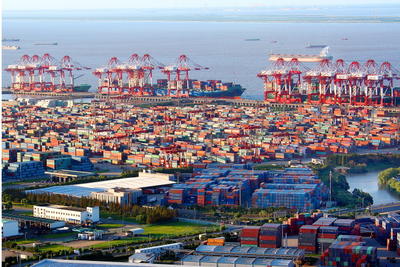What does the fillip to growth (Li’s ‘mini fiscal stimulus’ some are calling it) mean for the structural reform agenda due to be laid out in the upcoming Third Plenum? Abandoning the past priority given to fiscal stimulus was supposed to be a pillar of Likonomics. Is this stimulus to growth a sign that for now growth and social stability will triumph over structural reform and longer term sustainability?
As Wang Jiao warned recently: ‘While there is clear commitment to [the] course of reform, the pace of reform will depend on the strength of the economy, and China watchers should not be surprised if reform goes backwards or is postponed should the economy falter along the way’. On the other hand, stronger growth might allow bolder reform strategies.
China has reached a critical point where fundamental reforms of factor markets are needed to achieve a new and sustainable growth path. Financial reform is at the centre of the new reform agenda. Distortions in interest rates have long caused enormous misallocation of capital, favouring state-owned enterprises and shielding the banking sector from the need to build risk-management capacity.
So too is capital account liberalisation and RMB internationalisation, which need to be progressed simultaneously. Restrictions on short-term cross-border flows are the core impediment to capital movements. Without a more flexible exchange rate regime or a strong RMB, the sudden removal of capital account restrictions would cause undesirable financial instability. The RMB can only become an effective regional or international currency under a convertible capital account. The need for a convertible capital account, and for the RMB to become an international reserve currency, is a consequence of the scale of China’s cross-border trade and investment payments. But the progress toward achieving actual capital account convertibility and a global currency is also closely connected to China’s future capacity for economic growth.
The Party leadership meets next month to discuss rolling out these policies — policies that could hurt growth temporarily while they aim to put China’s expansion on a sounder long-term footing. The upcoming gathering is the third full meeting of the Party’s current Central Committee, including President Xi Jinping, Premier Li, ministers and the heads of the biggest state firms and banks. It was at such a gathering in late 1978 that Deng Xiaoping and his supporters inaugurated the series of reforms that began to open up China to trade and foreign investment and loosen state controls over the economy.
The reform challenges that face the Chinese leadership today are rightly compared with those that faced Zhu Rongji in the late 1990s as he led China towards accession to the WTO. That round of reform, itself kickstarted at the 1993 Third Plenum, effectively completed the integration of China’s goods markets with international goods markets. But the current challenge is one of even greater magnitude — the integration of China’s capital markets into international capital markets. Even embarked on now, it’s an ambition that still won’t be quickly achieved. For one thing, it’s not just a narrowly technical economic challenge; integration of China into international capital markets will require a much more open and transparent set of institutional arrangements that push at the envelope of political reform.
Maybe the degree of difficulty in this big game of national reform explains the hype surrounding a more cautious approach to reform experimentation with the announcement of the so-called Shanghai Free Trade Zone (FTZ). Bo Chen sees the establishment of the Shanghai FTZ as ‘part of a series of reforms by Premier Li Keqiang, which are focused on de-leveraging debt, reducing financial support and upgrading industrial infrastructure in order to better allocate resources through the market mechanism’. He observes that ‘many scholars have compared the Shanghai FTZ to the situation in Shenzhen in 1979, when China began experimenting with more liberal economic policies’.
Chen connects the Shanghai experiment with preparing China for participation in the Trans-Pacific Partnership and underlines its four main goals as: achieving zero tariffs on all merchandise trade, including agricultural products; protecting intellectual property rights, and making sure that labour, environmental and safety conditions meet international standards; enhancing economic and regulatory fairness and transparency, and removing subsidies and preferential support for specific industries and state-owned enterprises; and fully liberalising the financial services industry and opening up the capital account to facilitate the free convertibility of currency and movement of capital.
Our lead essay from Yiping Huang this week suggests that it ‘is not yet clear exactly what the Shanghai FTZ will achieve’.
As Huang argues, a ‘more fundamental issue is whether service sector liberalisation can actually be effectively tested in such a small area’.
Indeed, the suggestion that the Shanghai FTZ can somehow swing the nation towards fundamental interest rate, exchange rate and capital account reforms appears somewhat fanciful.
As Huang says, ‘it is not clear how it will work. Taking interest rate liberalisation as an example, can the FTZ form market-based interest rates among just a dozen banks and another dozen corporates, without the reference of a risk-free yield curve? And how would the FTZ control inward and outward capital leakage? Would the FTZ set strict quotas for every institution or would it establish strict capital account controls vis-à-vis the rest of Shanghai? The same applies to other service industries. Would a new telecom company established inside the FTZ be able to service clients outside the FTZ? If the answer is no, then no company would want to establish operations in the FTZ. If the answer is yes, then it really means nationwide liberalisation’.
And that’s the big question that the leadership must grapple with at the Third Plenum.


Likonomics appears to have moved on from no stimulus to ensuring stable growth. See http://news.sina.com.cn/c/2013-10-21/215928493445.shtml